Wednesday 1st April 2020
31 Mar 2020
Good morning class 4 
We've decided that we're going to extend the daily tasks to 7 days a week due to popular demand so be sure to log in on Saturdays and Sundays 
Time table
P.e – 9am start
Maths
English
Music
By the way, it's April fools day today - we're not really posting on Saturdays and Sundays  - sorry to disappoint.
- sorry to disappoint.
Thank you for sending in some pictures of your newly-born lambs! I bet you're all busy on the farm! That has certainly brightened up our page 
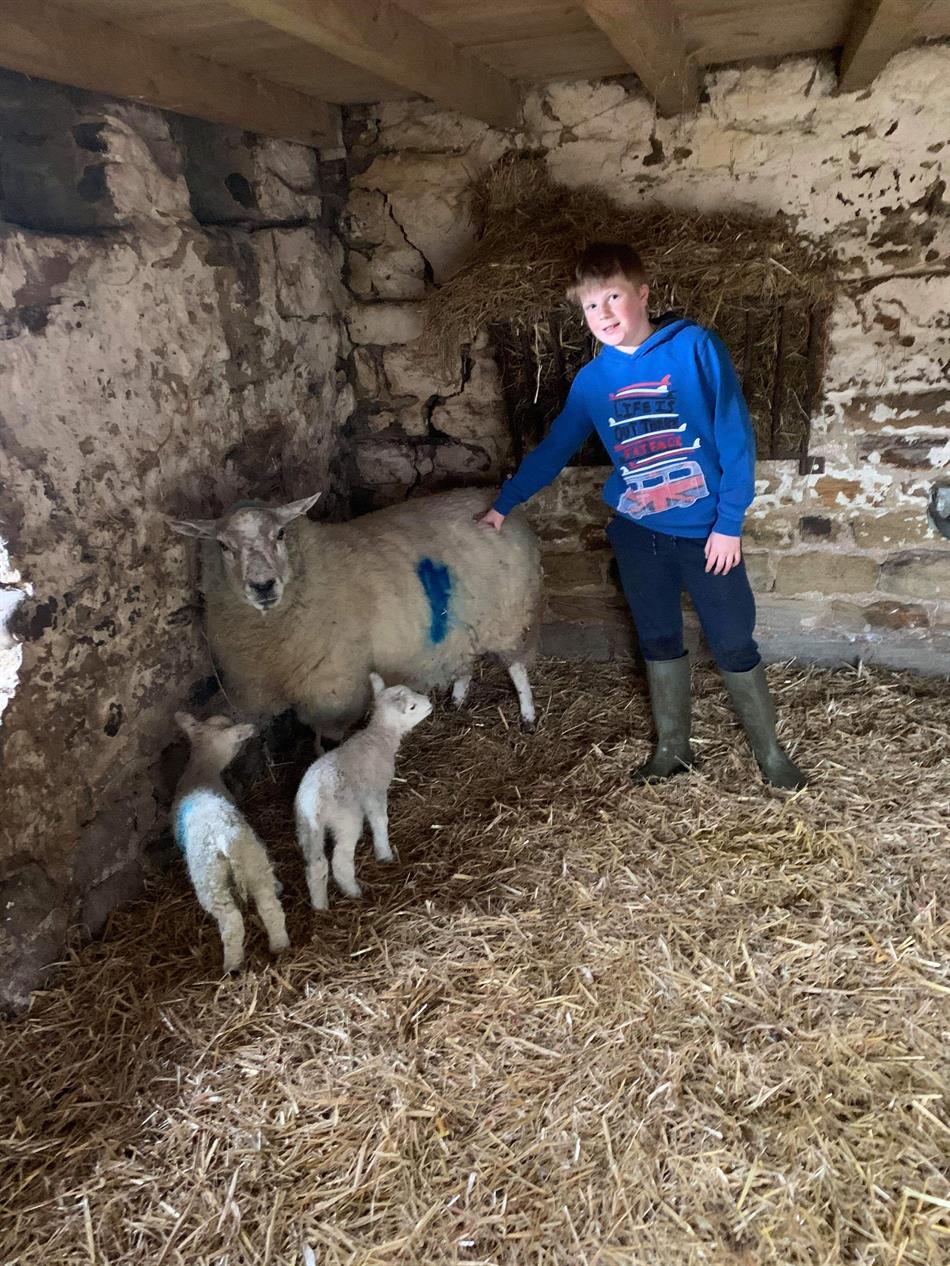
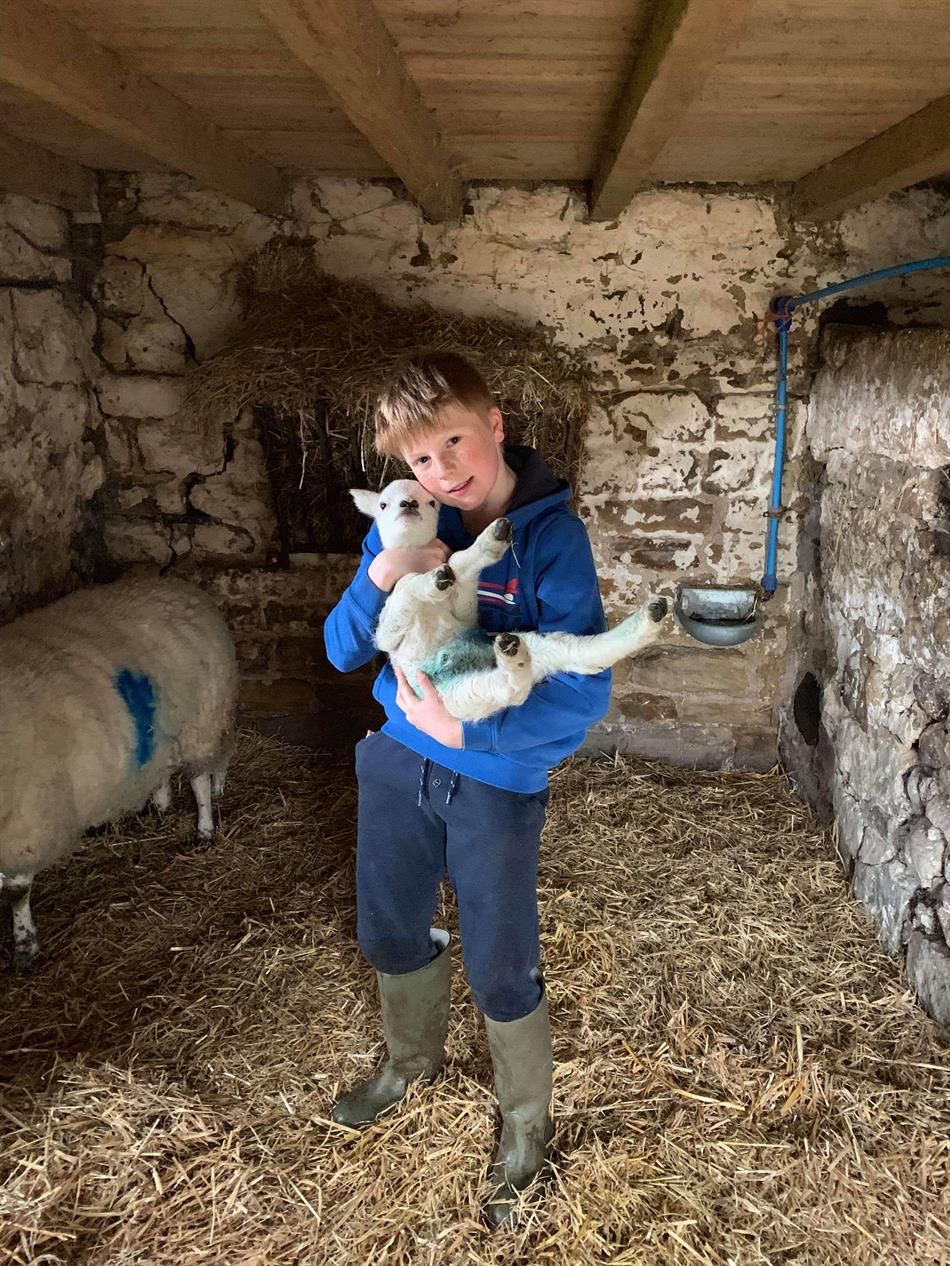
Thanks Harvey and Esme for sending in snaps of your pooches and cat - they definitely make our page more interesting! Look how smartly the little puppy is sitting there, posing for his picture. And here's Esme's cat, Scramble, who seems to be loving the freedom and has found something very interesting about that log! I wonder what?
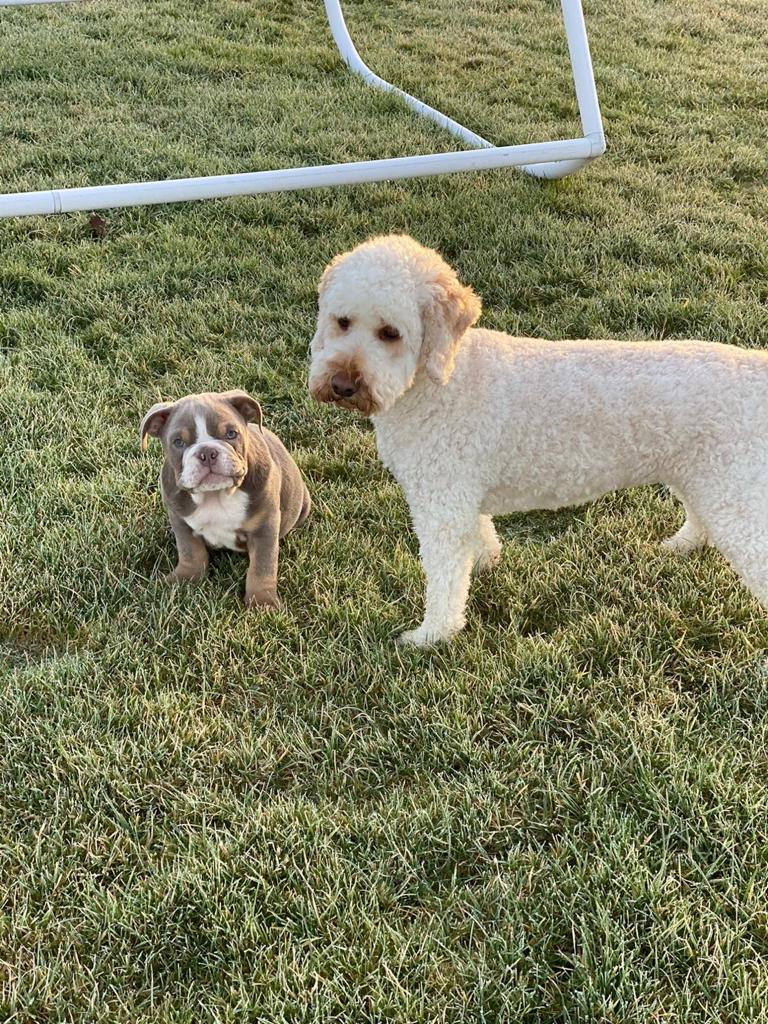
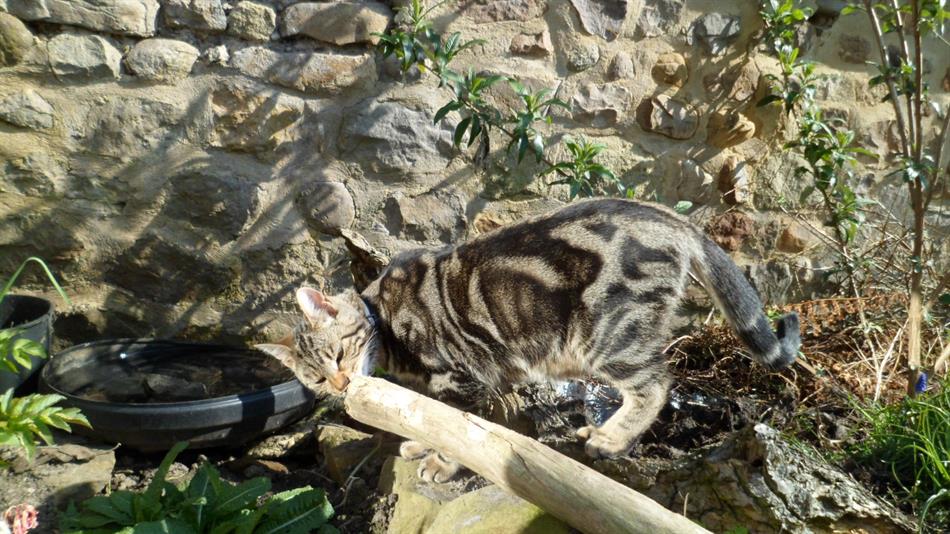
P.E – Joe Wicks’ p.e class https://www.youtube.com/watch?v=K6r99N3kXME&fbclid=IwAR2YYO8DSRkepnwzNTuksmbXDUcJg7WhYibGuz2HG4_bStk-37ipg4DWGMQ&app=desktop
Maths – Well done for completing yesterday’s task; you should have found that it made a helicopter. See below picture. Emmett sent his in which was great to see that it did actually work, well done Emmett!
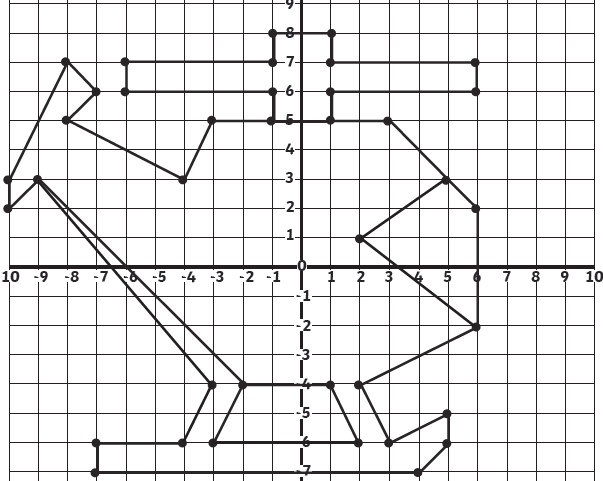
Warm up - We've been challenged to a battle of the bands class competition on times table rockstars. Points are given for answering in any mode and whoever has the most points by 3:30 on Friday is declared the winner. Are they mad? Surely, we've got this! Before we start our maths, log on and earn some points! I'll log on later and check how we're getting on.
Today we're going to be translating shapes. Can you remember what translating is? You might have heard of translating language such as 'Hello' in French is 'Bonjour'. It simply means to convert it without changing it. So we're translating shapes by moving them from one location to another but our translations should not look at all different from the original shape.
See the picture below. Do you know the name of this shape? It begins with a T...
I'm going to translate this shape right 3 squares and then up 1 square.
The best way for me to do this is find a vertices (corner) and count three squares right and then move one up and plot it with a plus. Let's do B together it's currently on (-2,6) can you please count three squares right and then one up? What did you get?
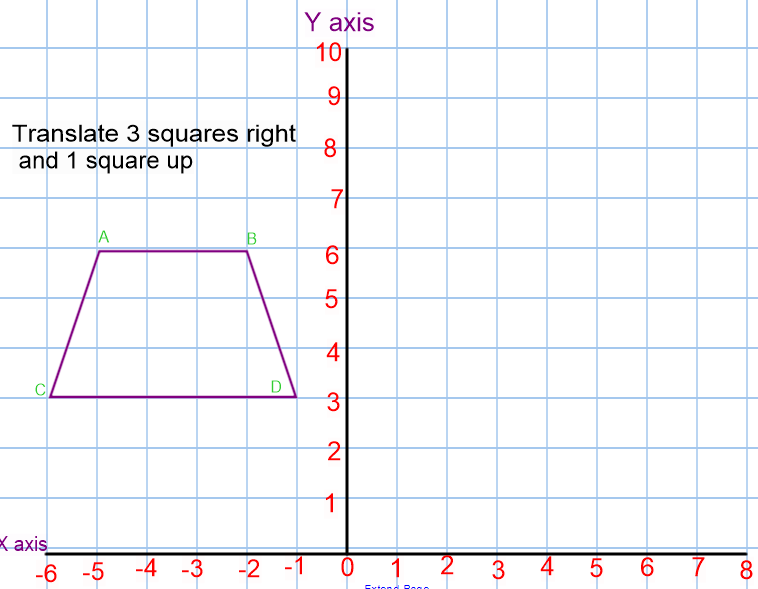
(Did you get (1,7)?
You'd then need to do that for the whole shape. Once you've plotted where each new vertices would be you can join it like a dot to dot (using a ruler of course  )
)
This is what it would look like - notice I plotted right in the corners  (#1dojo for Mr Breckon)
(#1dojo for Mr Breckon)
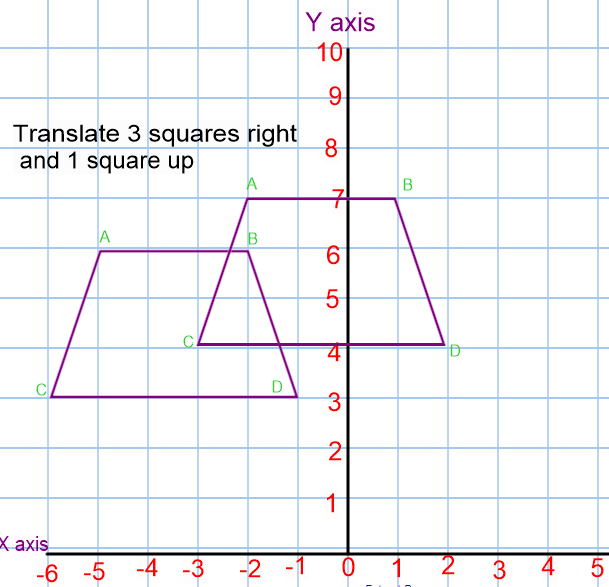
Translating shapes should be easy.
Task
Group one: Find page 10. You'll need to either download a quadrant grid or draw your own in your maths books -Single quadrant grids.pdf- < < (click to download)
Choose either column B or C
You'll need to draw the two shapes in exactly the same position on your quadrant and then follow the instructions to translate them and plot/draw them in their new position; I'd use a different colour for your translated shapes to see them clearly (on the same quadrant - similar to my example above)
Q3 - use one of the other quadrants on your sheet (or draw another) plot the shape and then in Q4 translate that same shape on the same quadrant.
Q5 - the same task but in Q7 all you need to do is write down what the new co-ordinates are of each vertices (corner) of your translated shape is.
Group two: Find page 9. You'll need to either download a quadrant grid or draw your own in your maths books
-Grid 4 Quadrants blank - 6 per page.pdf- < < (click to download)
Choose either B or C
You'll need to copy the shapes onto your drawn or printed out quadrant and then follow the instructions to translate it on the same quadrant grid - I'd use a different colour for the translations to make the stand out.
English
Click on this poem link and read it -sound collector.doc- < < (click to download)
What did you notice about that poem? Did you notice it rhyme? Did you notice where the rhyming words always appear? They are in the 2nd and 4th line in each stanza (stanzas are what we call paragraphs when they're in poems)
It's really important that the rhyme occurs in this position to make the poem flow when you're reading it. Did you notice how all the lines are roughly the same length - that helps to make it flow too.
Can you read it aloud, you should be able to hear the rhythm of it.
Task: Please make your own on up - It can be totally random sounds, they don't have to link with anything. Tomorrow we're going to be going into more depth with it but today is just a chance to play with words. I'd like you to copy the first stanza out exactly as you see it - the one that begins ' A stranger called this morning' and then write 4 or 5 new stanzas out. Remember the 2nd and 4th ending words need to rhyme.
Here's my attempt
The tapping of the pencil
The scraping of the chair
The rubbing out of errors
The sound of chaos everywhere
The humming of the children
The screaming from class one
Mr Breckon's failing voice
has well and truly gone!
Hmmm, what do you think inspired that poem? Anyway, could you now write your own too. If you like, print off the template attached to the poem you just downloaded and write in your stanzas there or just write the whole thing down in your English books or even save it to Purple Mash and I'll be sure to look later today.
When you've written your 4 or 5 stanzas end with the last stanza in the poem. It also begins ' A stranger called this morning'
If you do want to do it on purple mash click this link https://www.purplemash.com/#app/pup/blank_template
Music
Most of you are familiar with Mrs Watkinson as we have enjoyed sharing her music sessions at school last year.
Mrs Watkinson has invited you to join in with her online music lessons.
To join in with one of her sessions, please click on this link:
https://drive.google.com/file/d/17JWkJoDX1bLjRMk__eh_1ABatSqZqU7x/view
That's it for today,
Mr Breckon